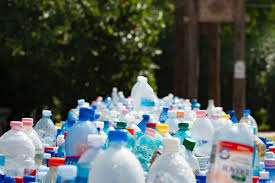Polypropylene (PP) is a versatile polymer that is widely used in packaging, automotive parts and textiles. Due to its wide use, understanding what it takes to recycle PP is crucial for the reduction of environmental impacts and for promoting sustainable practices. This is a complete guide to PP recycle.
What is Polypropylene?
Polypropylene is a thermoplastic polymer known for its durability, chemical resistance, and flexibility. It is commonly used in food containers, bottle caps as well as other household items. Despite its extensive usage, polypropylene is not often recycled than other materials like PET (polyethylene Terephthalate) as well as HDPE (high-density polyethylene).
Why Recycle Polypropylene?
Recycling polypropylene reduces the environmental impact on plastic garbage. PP can take several hundred years to decompose in landfills, causing pollution and resource depletion. By recycling PP, we can conserve natural resources, reduce greenhouse gas emissions, and reduce the amount of waste.
How is Polypropylene Recycled?
Collection and Sorting: PP items are collected through curbside recycling programs or drop-off centres. The first step in recycling is sorting, where PP gets separated from the other kinds of plastics. This is essential because mixing different plastics can cause contamination in the recycling process.
Cleansing and shredding After being separated, PP materials are cleaned to remove any contaminants such as food residues or labels. After cleaning, the plastic is cut into small pieces, making it easier to process.
Processing and pelletizing shredded PP is then melted and extruded using a die to form long lengths of. The strands are then cooled before being cut into small pellets. These pellets can serve as raw materials to make new PP products.
Production of New Product: The repurposed PP pellets can be used to produce a variety of new products, including automotive pieces, outdoor furniture, and construction materials. This closed-loop method reduces the need for virgin plastic manufacturing and decreases the overall impact on our environment.
Challenges in PP Recycling
Despite its benefits, PP recycling faces challenges. One of the biggest issues is the absence of infrastructure and facilities specifically designed to support PP recycling. Furthermore, PP can be contaminated by other materials, which can complicate the recycling process. It is also necessary for improved technology that can improve the efficiency and quality of recycled PP.
The Future of PP Recycling
The future of PP Recycling is looking promising due to technological advancements and a growing awareness of environmental issues. Innovations such as chemical recycling, which breaks down PP into its basic monomers for reuse, could dramatically improve recycling rates and efficiency.
In the end, even though PP recycling is not without its challenges however, it is an essential aspect of tackling the problem of the plastic waste. Through understanding and supporting recycling initiatives, we can help to create a more sustainable future.



